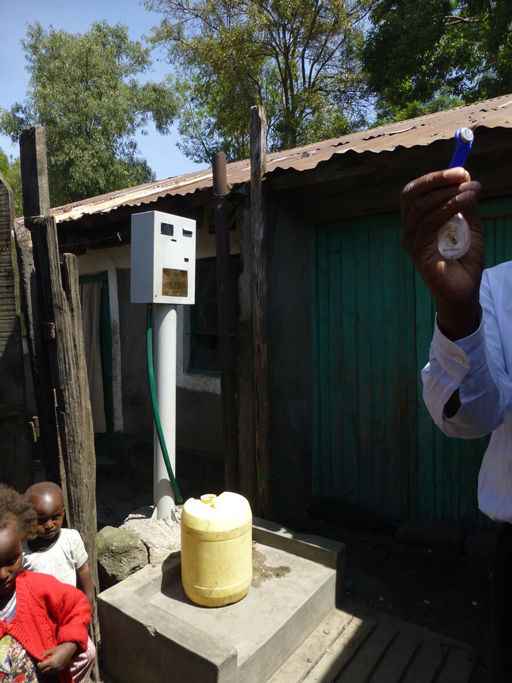13.4.2 Prepaid meters
There is no billing process for water purchased from water kiosks because payment is simply by cash. One innovative alternative to this is the use of prepaid meters on public water points, which have been introduced in some parts of South Africa and Kenya (Figure 13.5). With prepaid meters, consumers buy credit in advance, which is registered electronically on a plastic card or token. They then insert the card or token into the meter, which automatically releases water. The cost of the water they have used is deducted from the credit. The advantage of this method is that people can budget for water by topping up their card as and when they can afford to pay. Also, the water point does not have to be managed by a person, and can be open 24 hours a day.

In Ethiopia, a pilot trial is underway of a prepayment system for domestic water customers. The householder pays money in advance to the water utility and then uses the water. This enables the household to proactively manage its budget, and simultaneously save time in going to pay the water bill each month. The water utility also makes savings as a meter reader doesn’t have to be sent out to take readings for a bill.
13.4.1 Simple and smart meters
